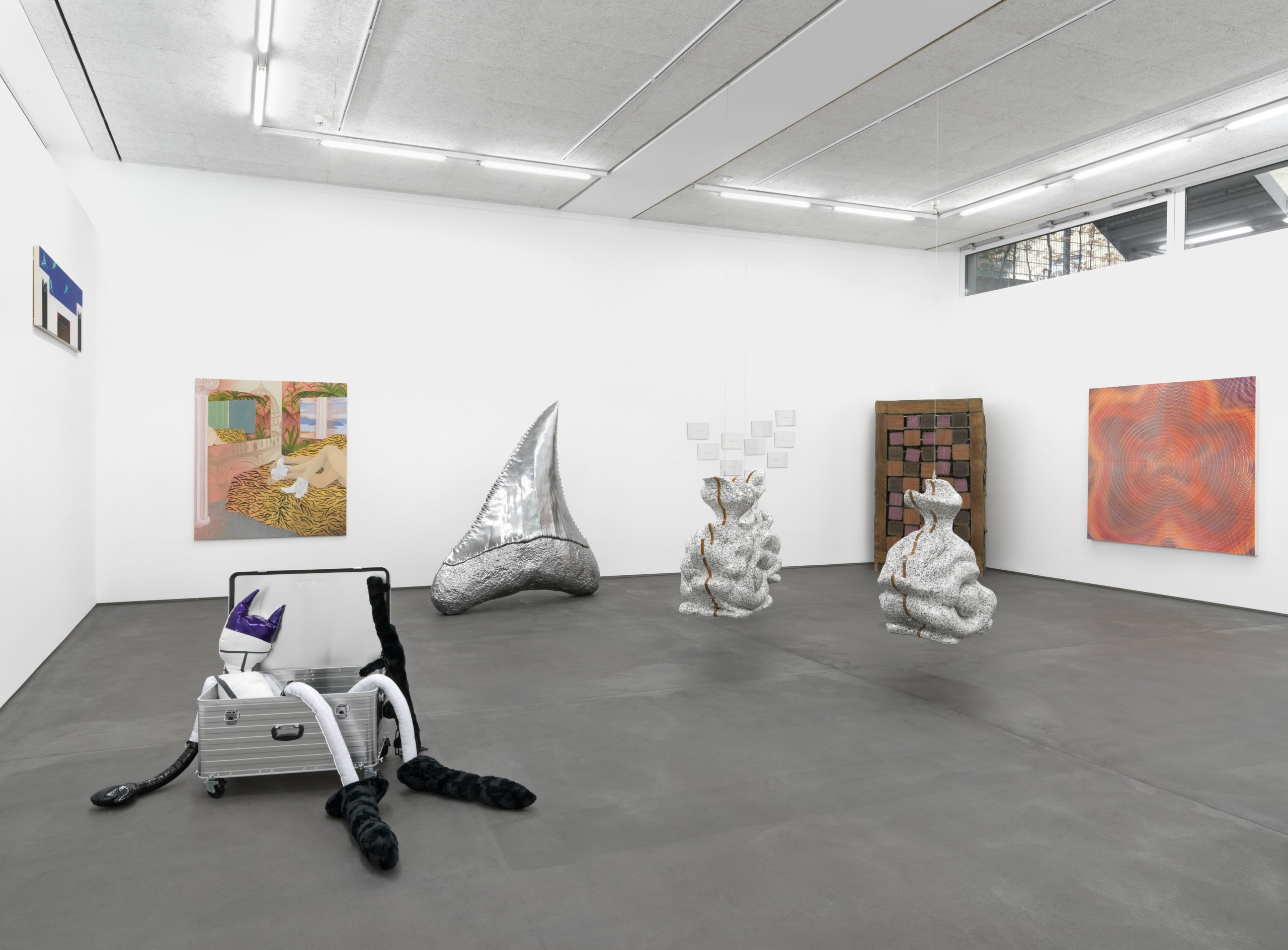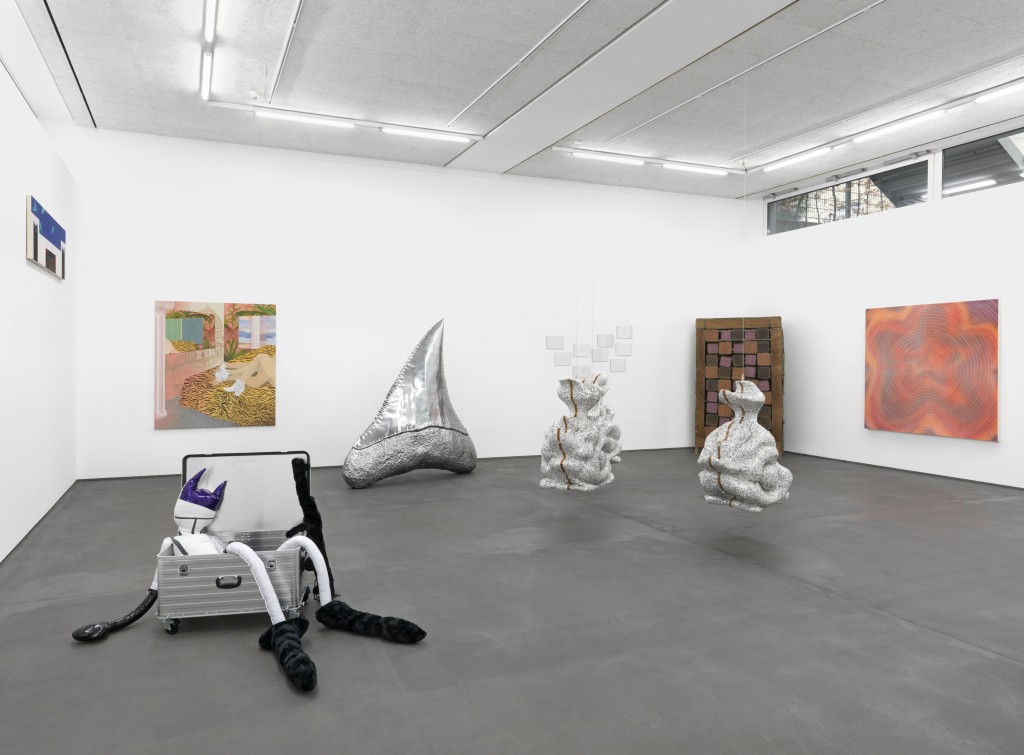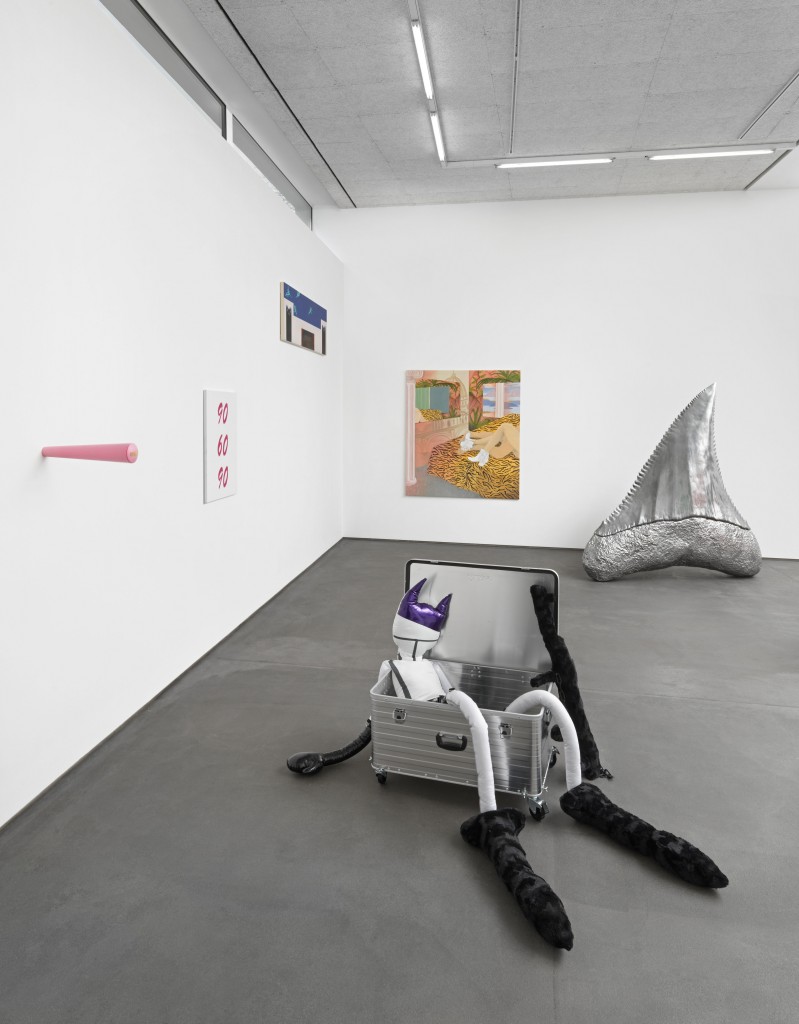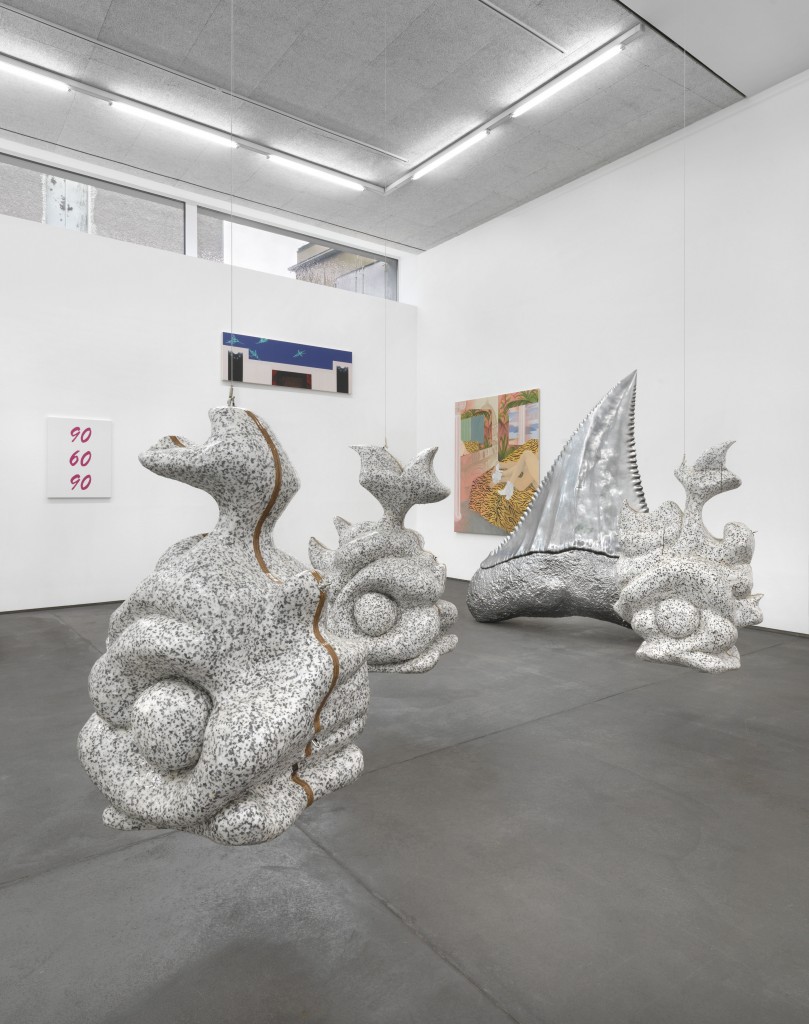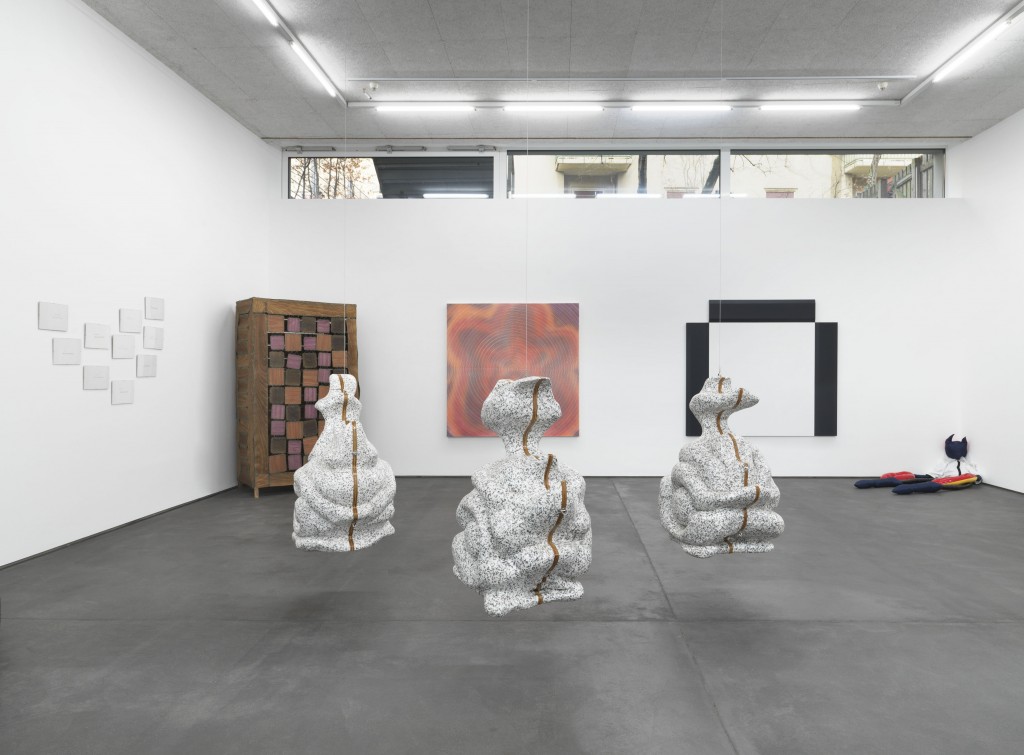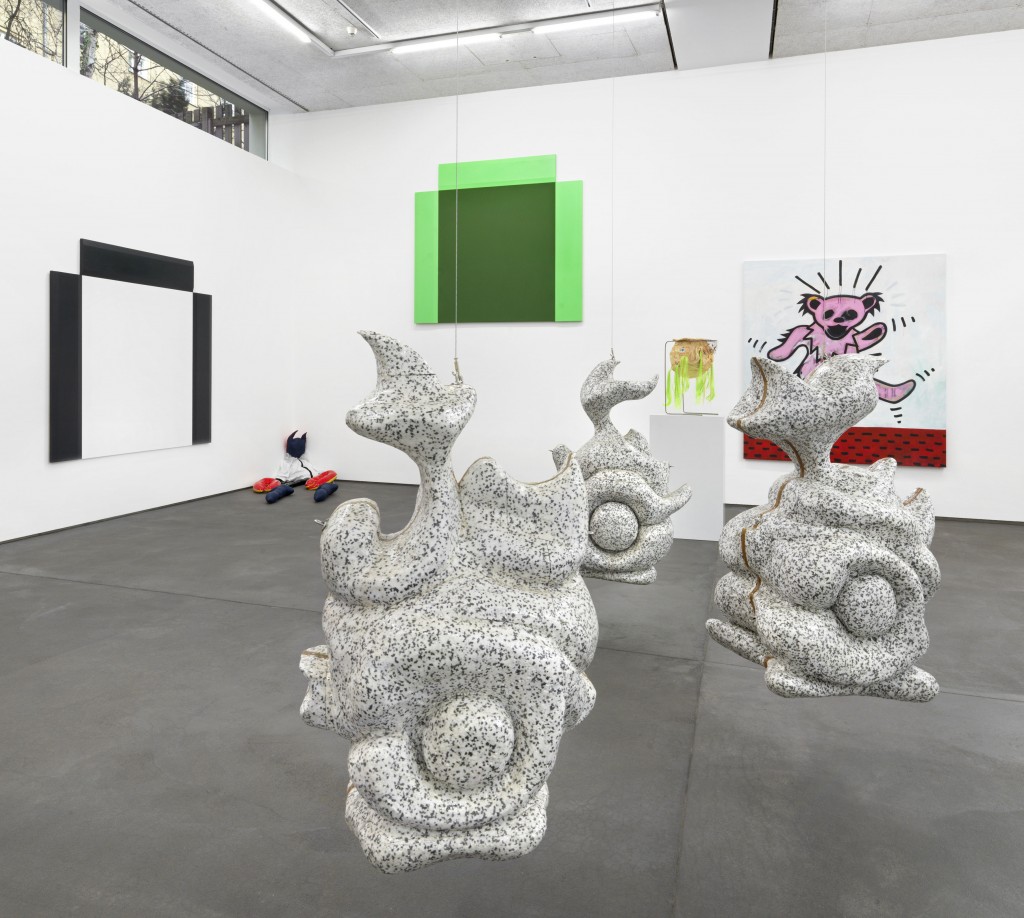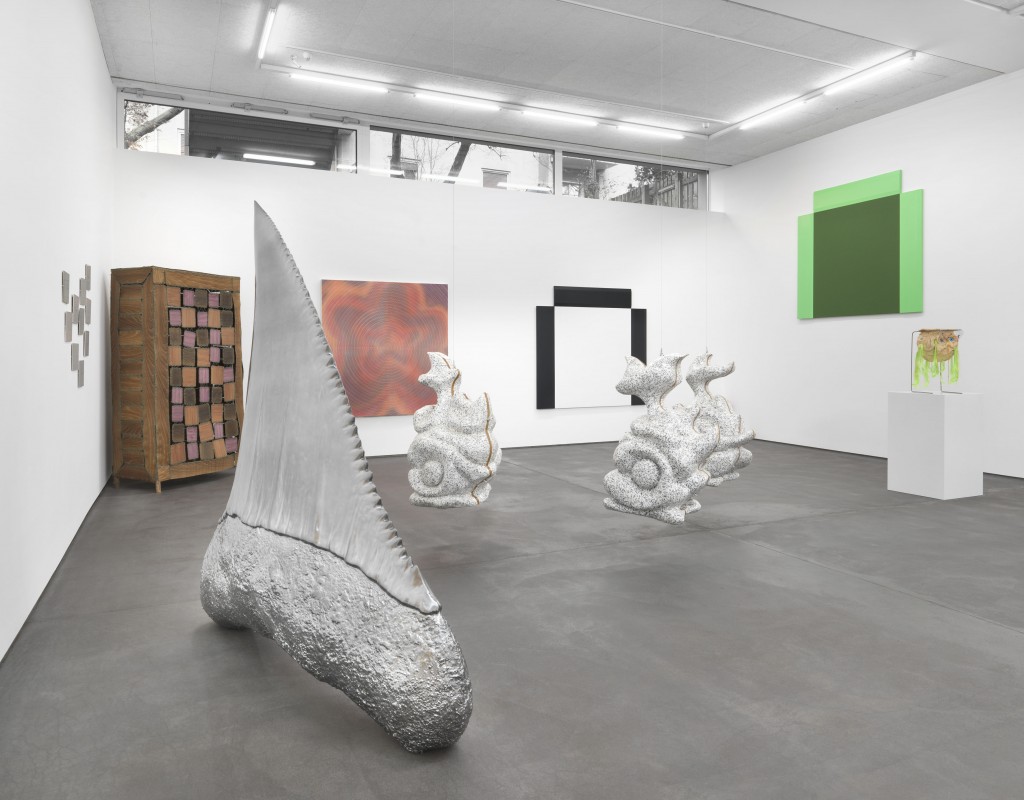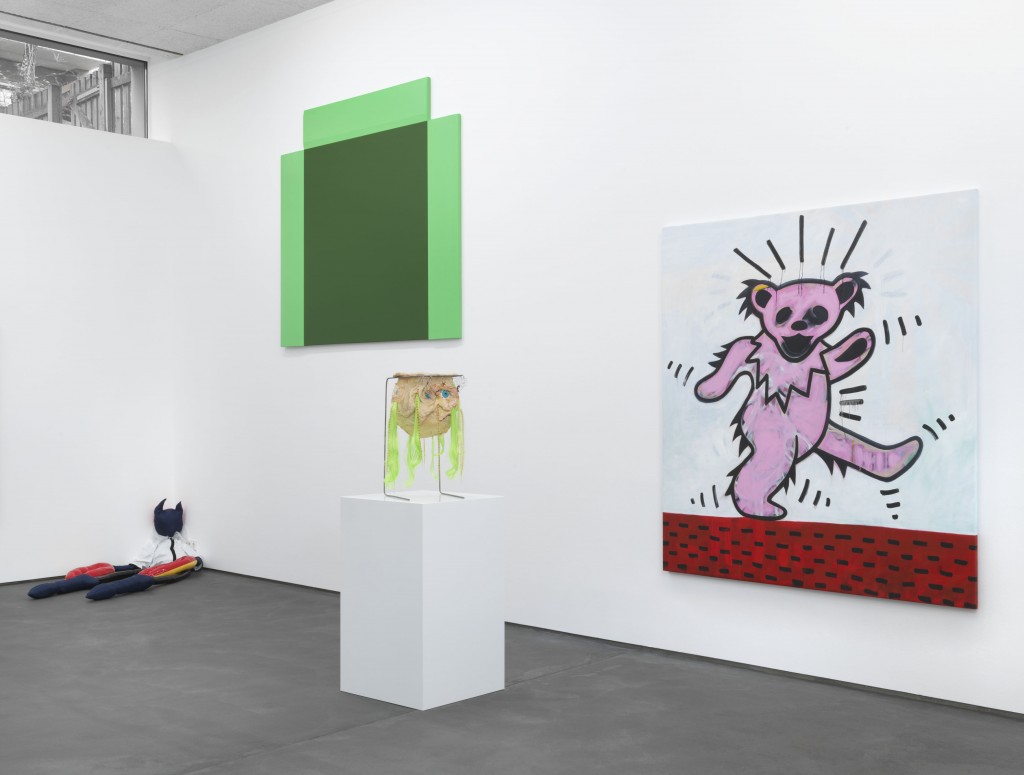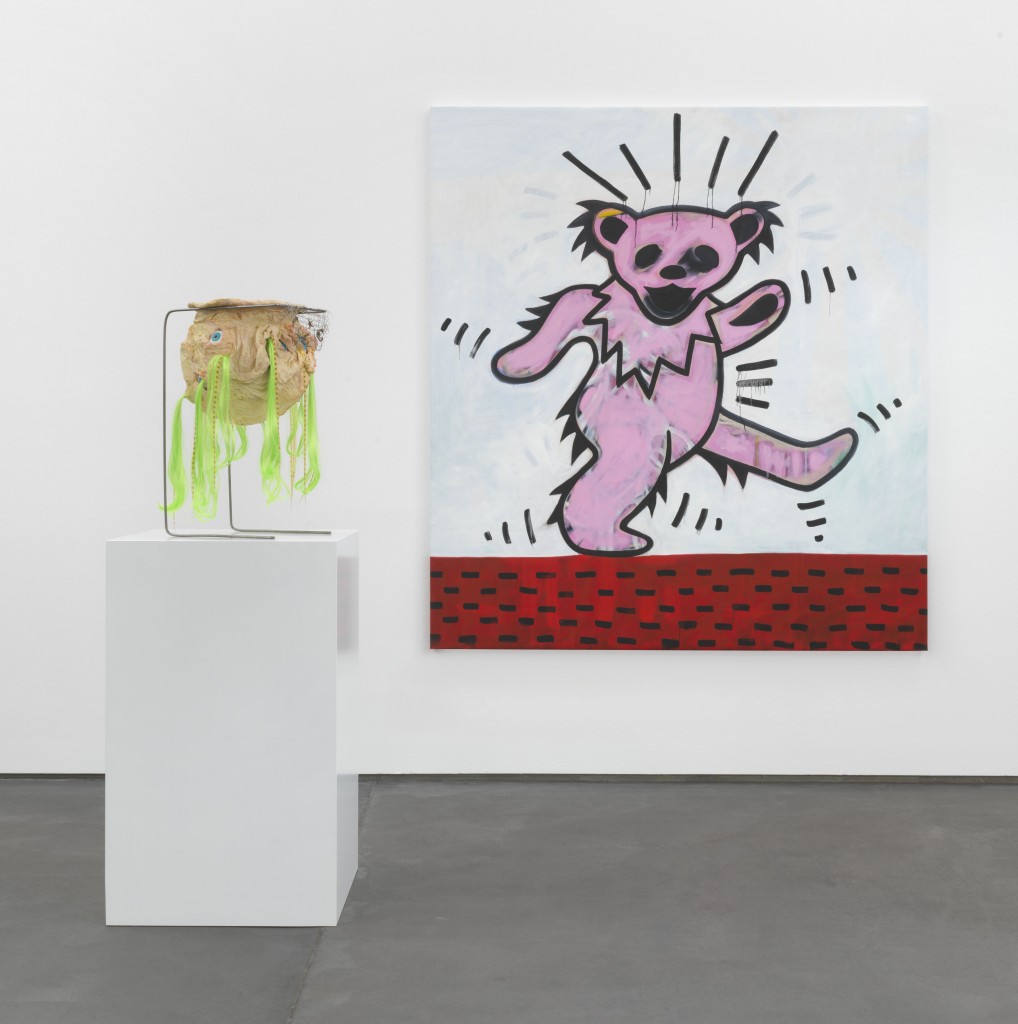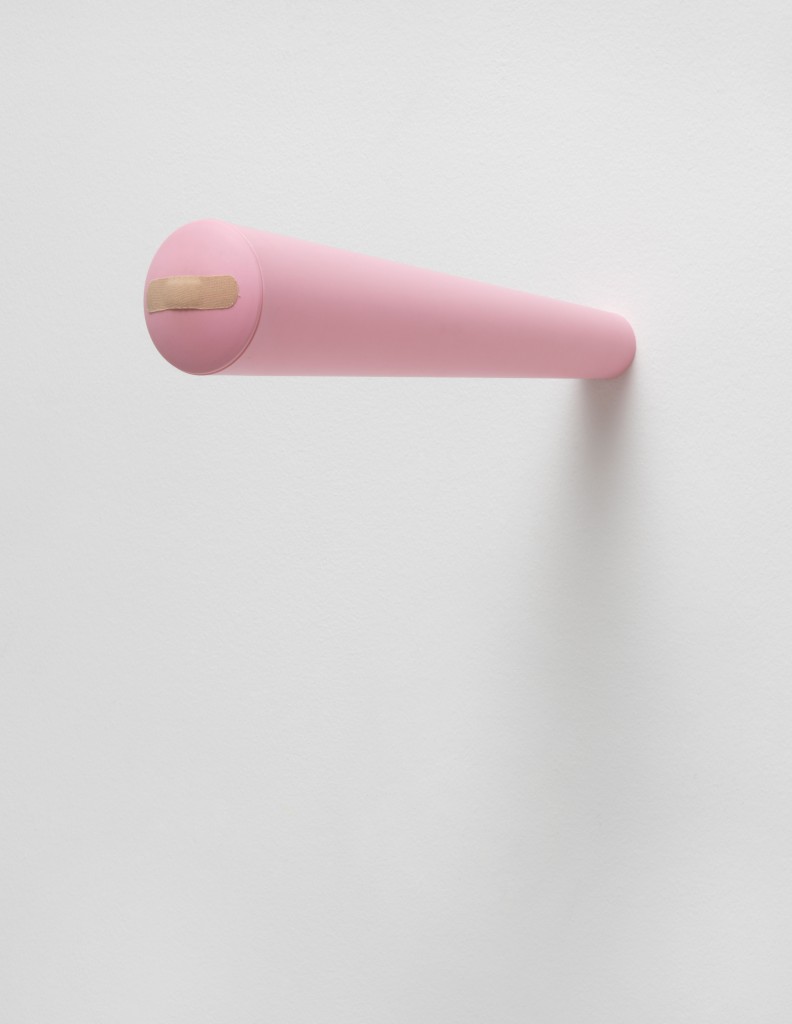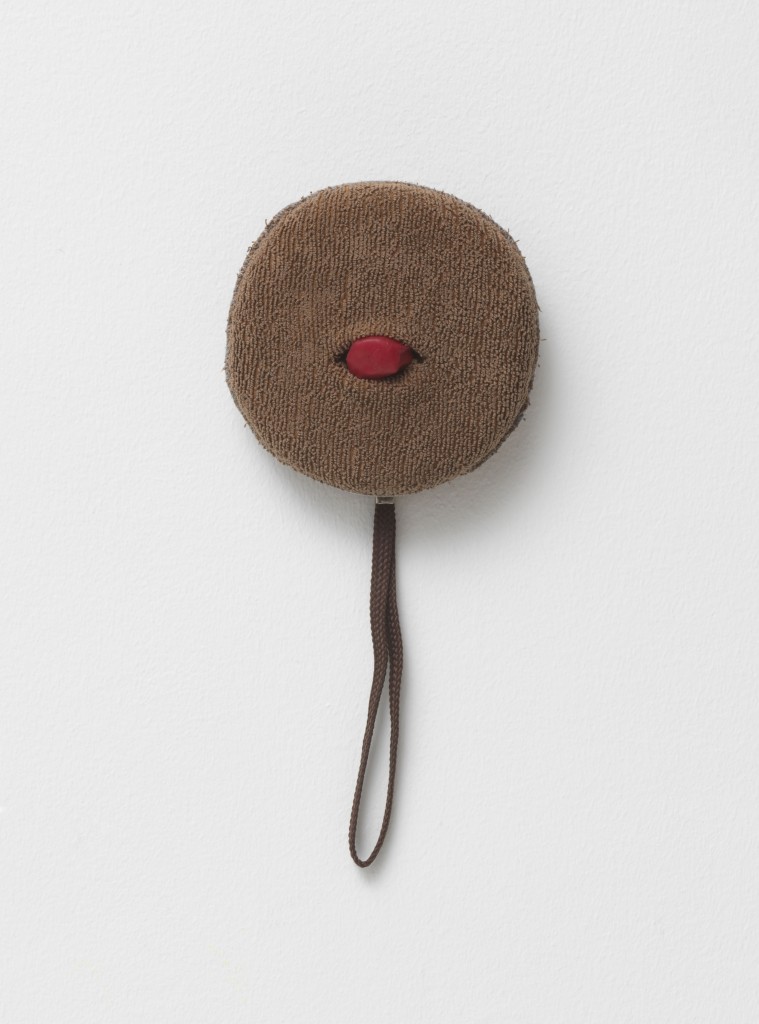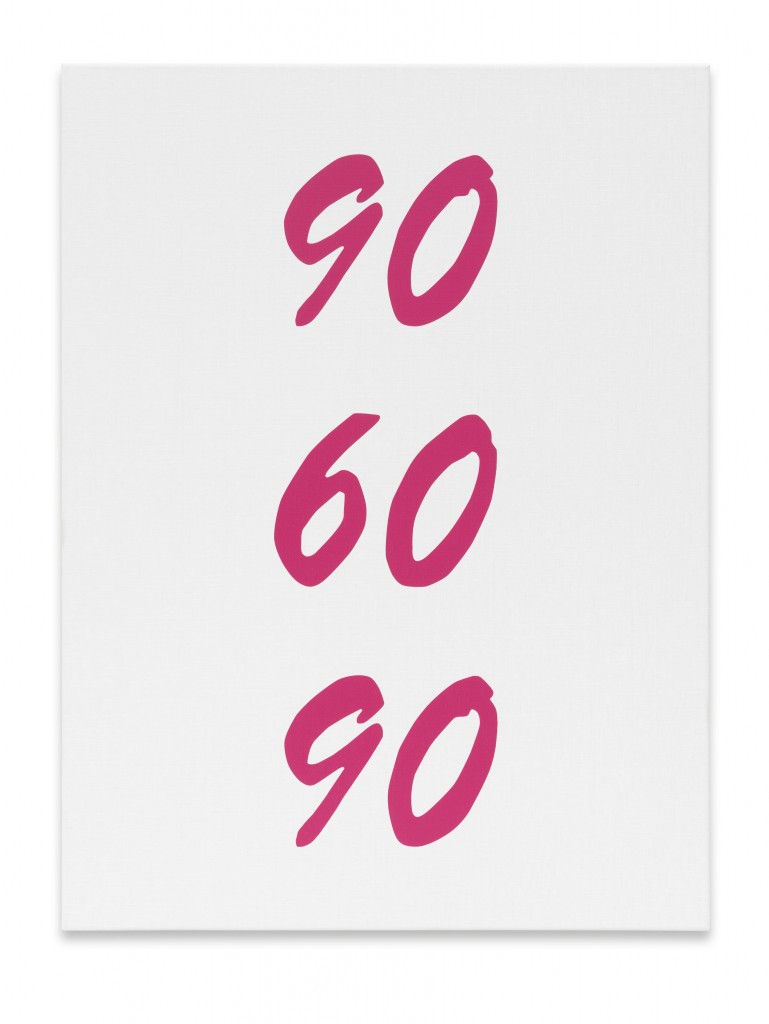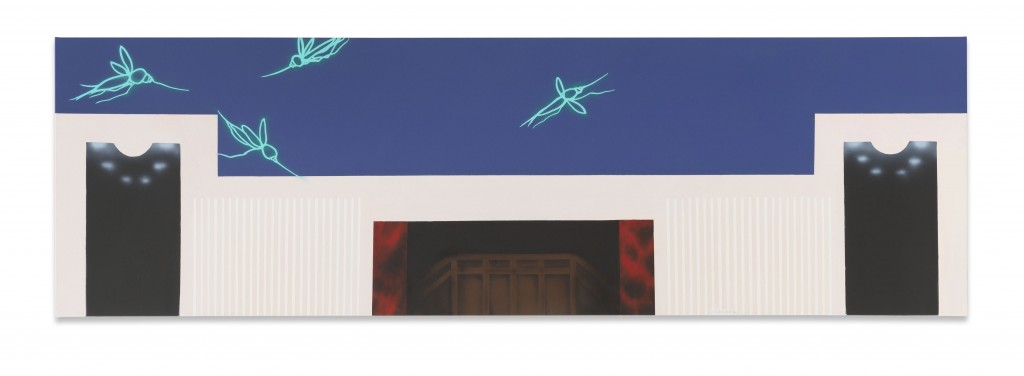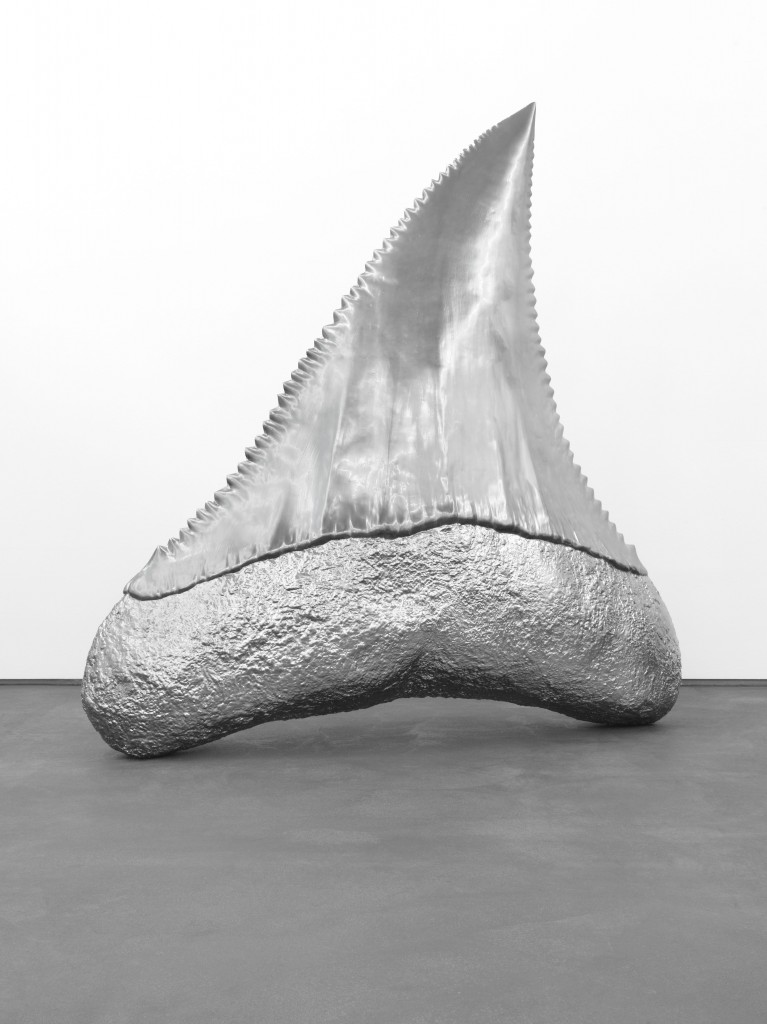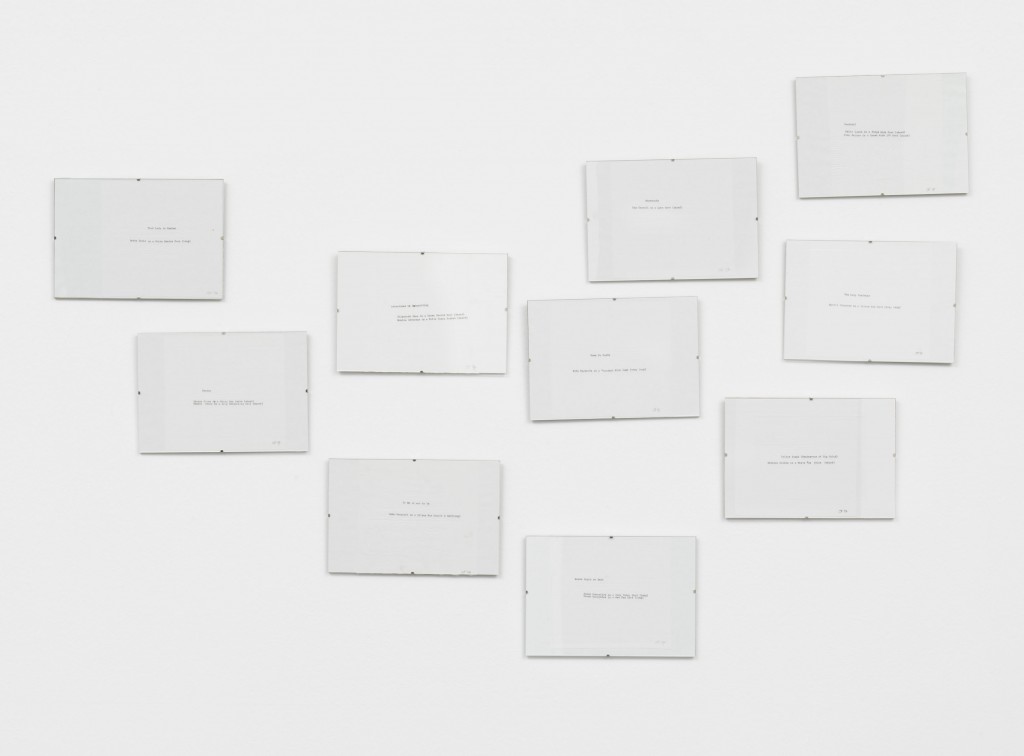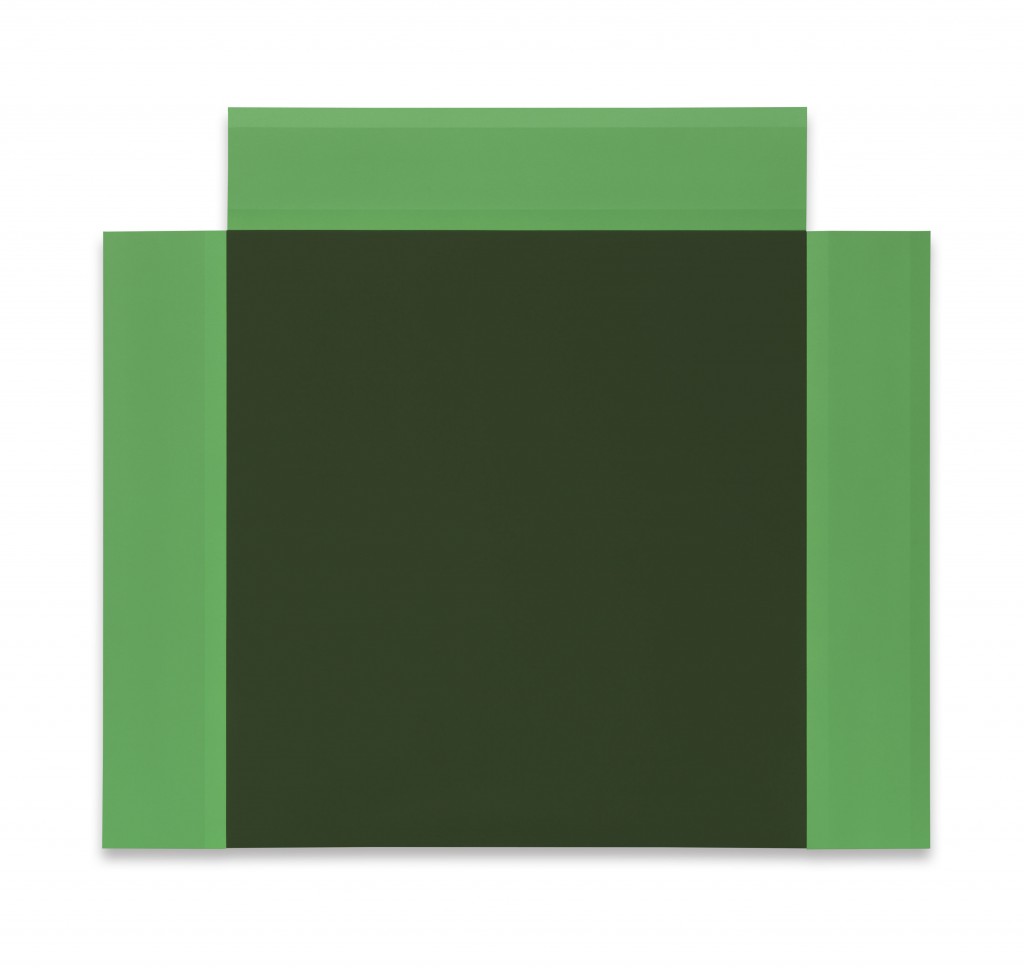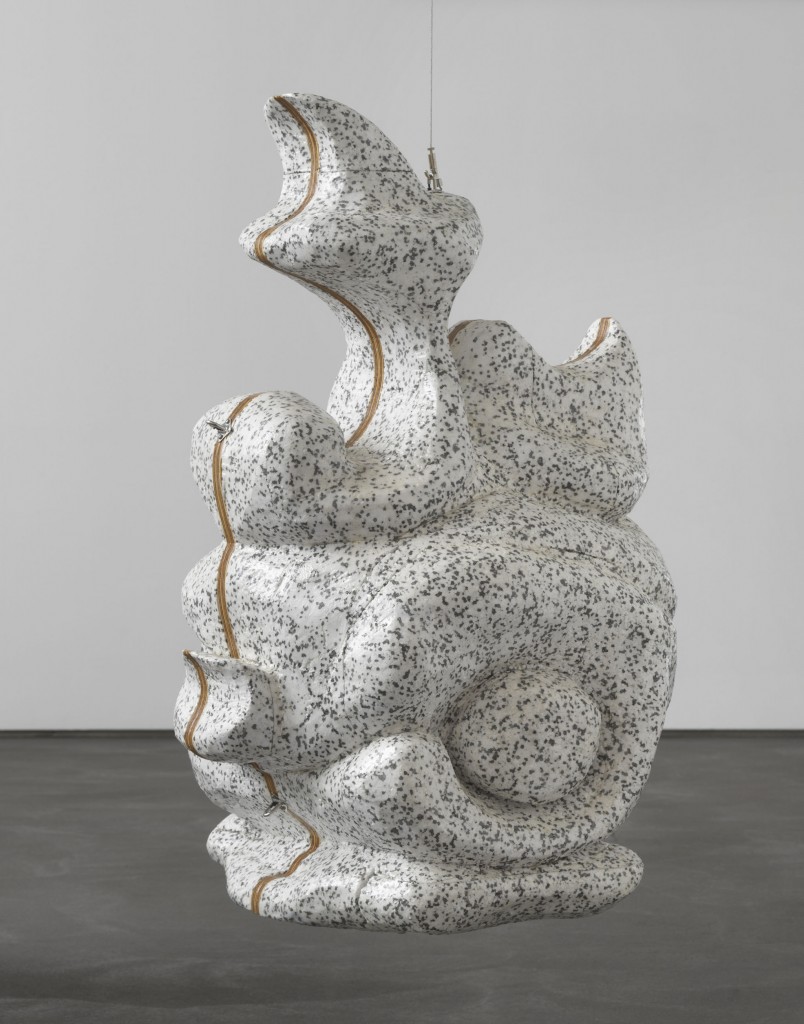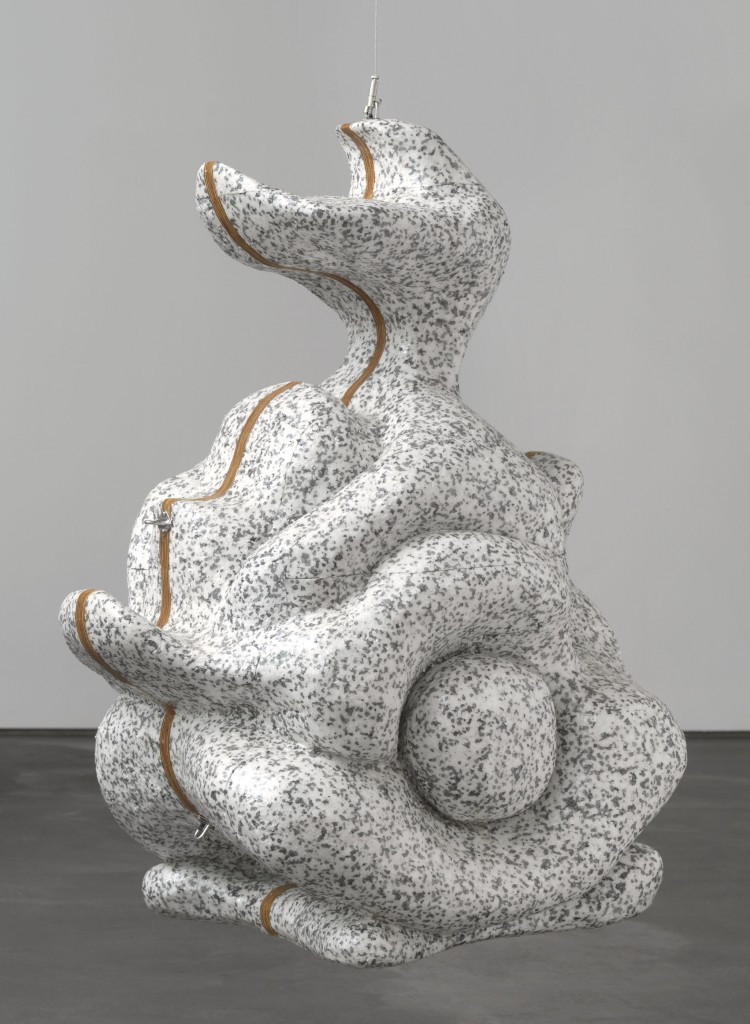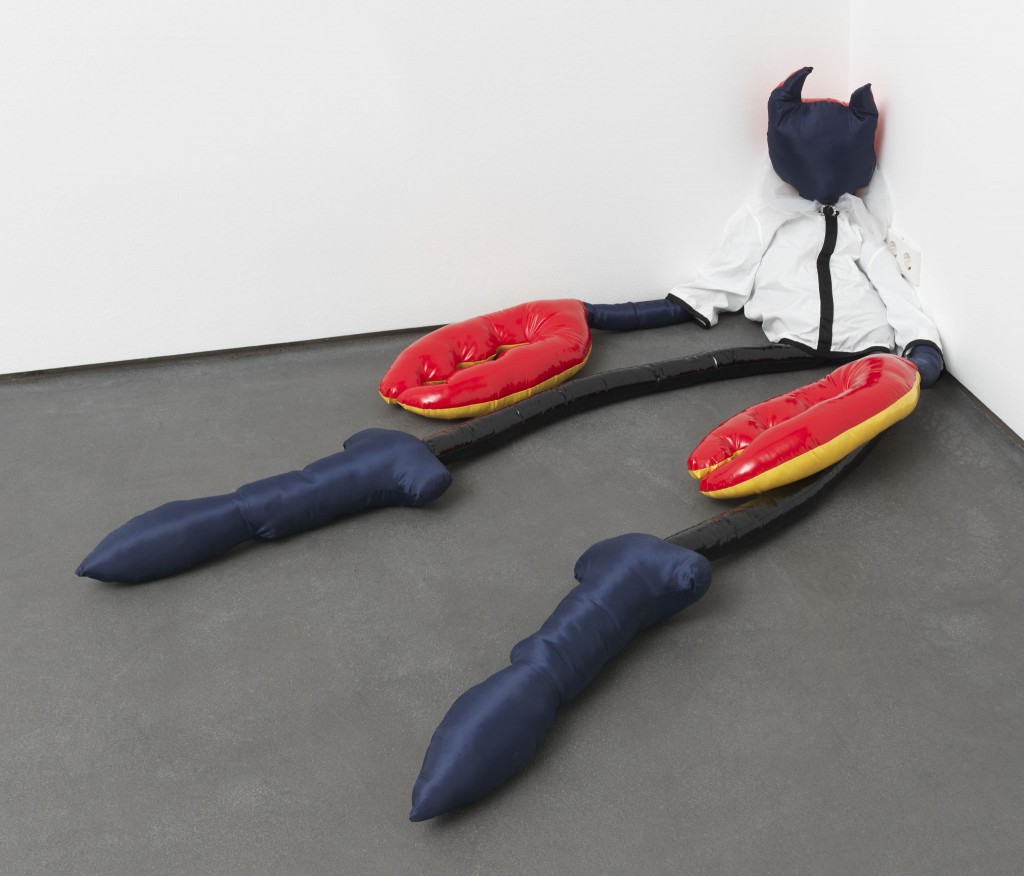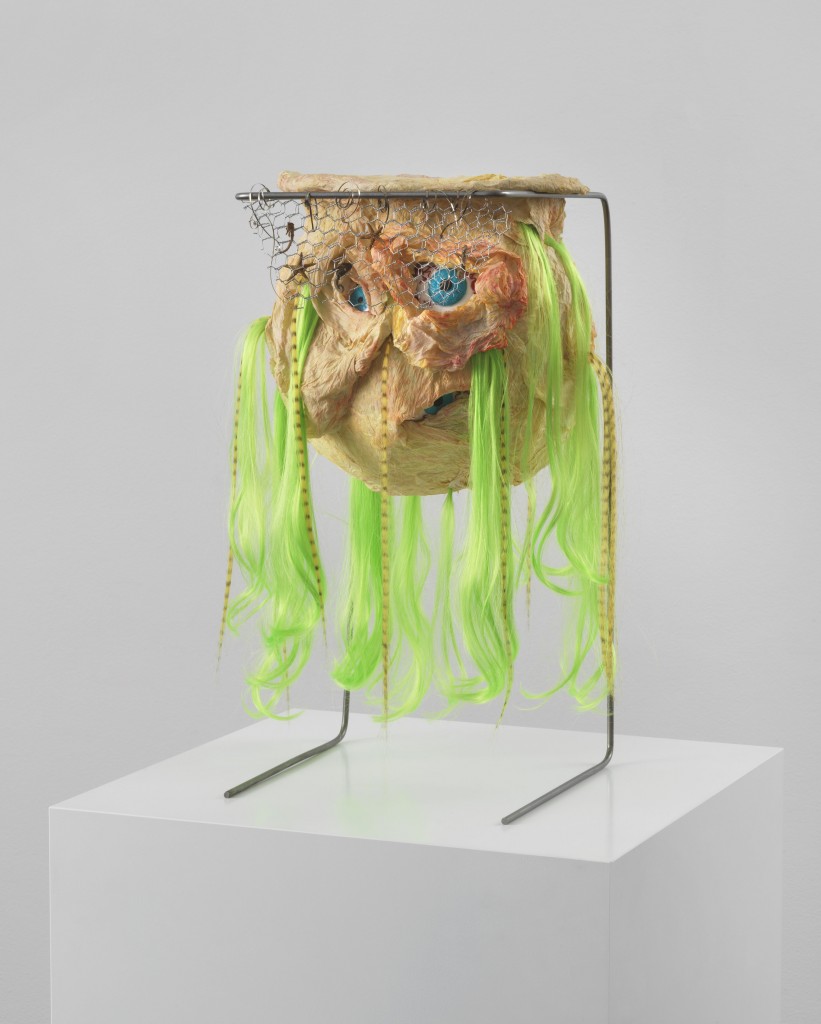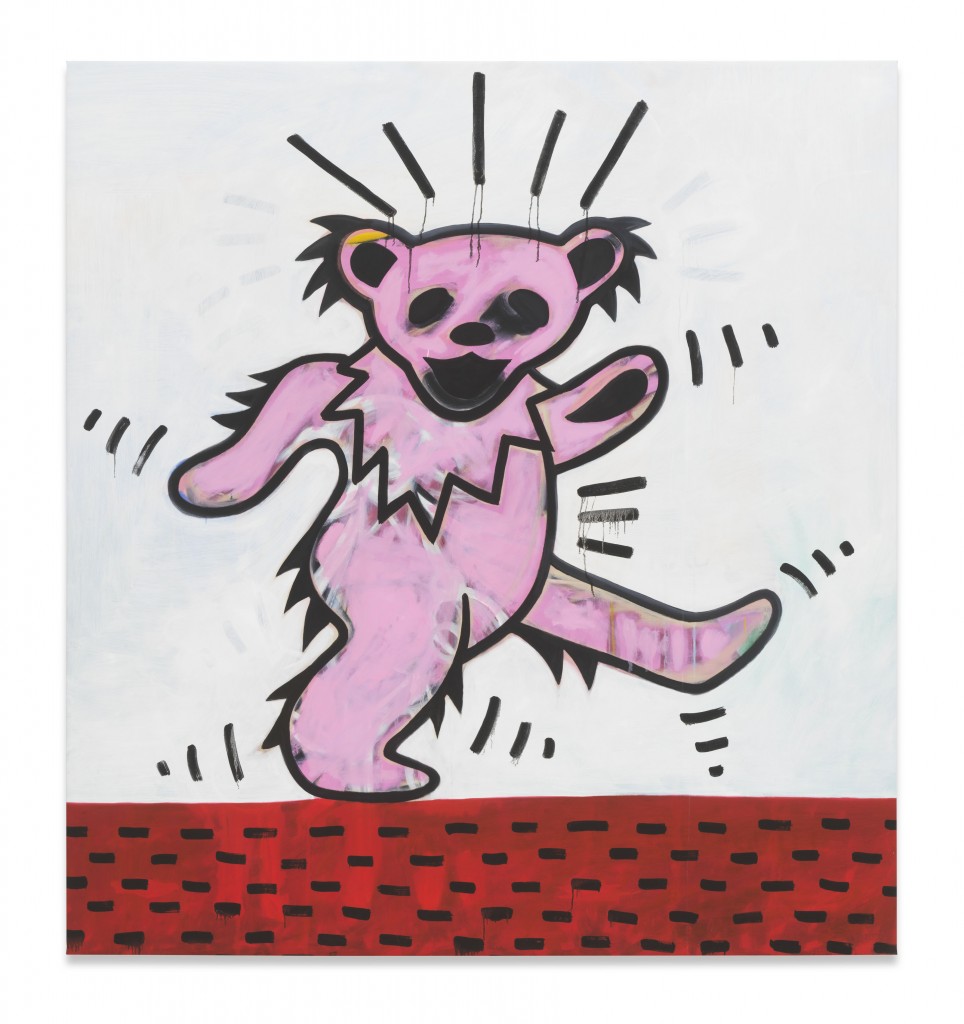DITTRICH & SCHLECHTRIEM is pleased to present a proposal by gallery artist ALFREDO ACETO titled DUNA BIANCA and including works by selected Swiss-based artists JACQUES BONNARD, TINA BRAEGGER, NATACHA DONZÉ, SYLVIE FLEURY, FRÉDÉRIC GABIOUD, STÉPHANE KROPF, MIRIAM LAURA LEONARDI, THOMAS LIU LE LANN, CHARLY MIRAMBEAU, DENIS SAVARY, CLAIRE VAN LUBEEK, and ROMANE DE WATTEVILLE. The exhibition focuses on a cross-section of artists of different generations working in and around Lausanne, Geneva, and Zurich specifically, with a variety of media and artistic practices, from painting to large scale sculpture, and at different stages of national and international exposure.
The title, DUNA BIANCA, quotes the song of the same title by the Italian metal/rock band Trombe di Fallopio on their 1994 album Santi Numi. The titular Duna is the iconic Italian car, produced by FIAT between 1985 and 2000, a particularly gangly vehicle that became the target of satire and mockery over the years. Considered to be one of the major failures of the automotive industry, the Duna still found a large success outside the European market, perhaps due to its practicality and low cost. In contrast to the clumsy design rejected by critics, the song “Duna Bianca” portrays an emotional version of that car, almost personified and full of tenderness.
Aceto’s classification and the reference to the song as a pseudo-organizational device in selecting the artists are purely an expedient; nothing here represents an exclusive choice. Rather, the show is an excuse for bringing together multiple positions. Instead of presenting artistic practices in an exhaustive or chronological way, it charts a fragmentary journey in which the twelve artists come together through friendship and / or common influences, while distinctly avoiding the risk to be too discursive.
The above concepts were addressed by Alfredo Aceto in a conversation with Samuel Gross. A complete catalog with an exhibition essay by Samuel Gross will be published and available at the gallery in mid-February 2020. For further information on the artists and the works or to request images, please contact Owen Clements, owen(at)dittrich-schlechtriem.com.
BONNARD’s (b. 1954) three Untitledwall sculptures draw on a limited repertoire of materials coming from daily routines. These objects, slightly modified or combined, remain isolated, suspended in an entropic relation to each other.
BRAEGGER (b. 1985) presents a new painting depicting the iconic Grateful Dead bear logo. Braegger works with this exact symbol since 2011.
DONZÉ’s (b. 1991) image composition in The Committee questions social codes, stereotypes, commonplaces and fables of popular culture, disrupting collective memory.
FLEURY (b. 1961) presents Labrisrynthe, an iconic 2008 work resembling a monumental shark tooth in shiny silver, an object that is revered as a talisman in Polynesian culture. Through her films, sculptures, paintings, and performances, Fleury explores the relationships between art making and the mechanics of consumerism, fetishism, commodification, and identity.
GABIOUD’s (b. 1990) paintings develop a clear, fresh and acidic monochrome pictorial vocabulary. Revisiting the heritage of major Swiss and American movements, Gabioud reveals clear affinities with Minimalism and Neo-Geo.
KROPF (b. 1979) participates with a “spiral” painting from a series whose making involves the use of stencils cut with a laser plotter. Pushing this technology to its limits to create impossibly thin spirals, he then uses a spray gun to lay down swirls of acrylic paint.
LEONARDI’s (b. 1985) painting is a throwback to a period when women used to measure their breasts, waists, and hips. The 90–60–90 used to represent a certain idea of ideally standardized body. Today, those numbers have lost their meaning which goes hand in hand with the falling stocks of the lingerie brand Victoria’s Secret.
LIU LE LANN (b. 1994) creates soft sculptures installed on the ground, characters without faces or expressions, whose only visible attitude seems to have given up on the world around them, overwhelmed and weary modern superheroes.
MIRAMBEAU (b. 1995) proposes a wardrobe sculpture, Branlante, made of different types of wood stitched together and dividing the external space from the intimate perimeter of a wardrobe; here only suggested.
SAVARY (b. 1981) exhibits three sculptures elegantly hung from the ceiling, titled Hanoï. Savary’s practice interweaves narratives steeped in childhood fantasies and adult phantasmagoria with fictionalized fragments from art and literature and historical figures.
VAN LUBEEK’s (b. 1990) sculpture What’s Cooking invites the viewer to set foot into a dystopian, post-apocalyptic world and cheekily criticizes the capitalist system.
DE WATTEVILLE’s (b. 1994) large-scale painting You and me in the motel, pursues her interest in the history of portraiture by examining the different layers that it brings to the determination of self. With a fine sense of humor, she plays with the stereotypesandthe canons of portraits in our iconography.
DITTRICH & SCHLECHTRIEM freuen sich, einen Vorschlag von ALFREDO ACETO mit dem Titel DUNA BIANCA vorzustellen. Zu sehen sind Arbeiten ausgewählter in der Schweiz lebender Künstler: JACQUES BONNARD, TINA BRAEGGER, NATACHA DONZÉ, SYLVIE FLEURY, FRÉDÉRIC GABIOUD, STÉPHANE KROPF, MIRIAM LAURA LEONARDI, THOMAS LIU LE LANN, CHARLY MIRAMBEAU, DENIS SAVARY, CLAIRE VAN LUBEEK und ROMANE DE WATTEVILLE. Die Schau bietet einen Querschnitt durch die Kunstszenen vor allem in und um Lausanne, Genf und Zürich, mit Künstlern aus verschiedenen Generationen, die in diversen Medien und Techniken – von Malerei bis hin zu großformatiger Skulptur – arbeiten und teils relativ unbekannt, teils im In- und Ausland bereits vielbeachtet sind.
DUNA BIANCA verweist auf einen Song desselben Titels der italienischen Metal/Rock-Band Trombe di Fallopio auf dem 1994 erschienen Album Santi Numi. Die Duna des Titels ist das italienische Kultauto, ein von 1985 bis 2000 von FIAT produziertes, merkwürdig staksiges Fahrzeug, das über die Jahre einiges an bösem Spott einstecken musste und als ein beispielhafter Misserfolg in der Autoindustrie gilt, sich aber in außereuropäischen Märkten durchaus gut verkaufte, womöglich weil es vielseitig, unkompliziert und günstig war. Anders als die Kritiker, die das unbeholfene Design verrissen, besingt „Duna Bianca“ ein Auto, das zärtliche Gefühle weckt und beinahe zu erwidern scheint.
Die von Aceto vorgeschlagene Ordnung und der Verweis auf den Song als scheinbar die Sichtung der Positionen strukturierendes Element sind nur ein Vorwand; die Schau steht nicht für eine in sich geschlossene Auswahl, sondern stellt eine Gelegenheit, diverse Künstler zusammenzubringen. Statt ihr Schaffen umfassend oder chronologisch vorzustellen, zeichnet sie eine fragmentarische Reise nach, in deren Verlauf die Künstler durch Freundschaften und / oder gemeinsame Einflüsse miteinander verbunden sind, vermeidet aber ausdrücklich eine allzu diskursive Form.
Alfredo Aceto hat diese Überlegungen in einem Gespräch mit Samuel Gross erläutert. Ein umfangreicher Katalog mit einem Essay von Samuel Gross zur Ausstellung ist in Arbeit und wird ab Mitte Februar 2020 in der Galerie aufliegen. Für weitere Informationen zu Künstlern und Werken oder um Bildmaterial anzufordern, wenden Sie sich bitte an Owen Clements, owen(at)dittrich-schlechtriem.com.
BONNARDs (geb. 1954) drei Wandskulpturen ohne Titelberuhen auf einem begrenzten Materialvorrat, der sich aus täglichen Verrichtungen speist. Die geringfügig veränderten oder neu kombinierten Objekte bleiben isoliert, in durch Entropie gekennzeichneten Verhältnissen zueinander verhaftet.
BRAEGGER (geb. 1985) zeigt ein neues Gemälde, auf dem ein Bär, das ikonische Erkennungszeichen der Grateful Dead, zu sehen ist. Mit genau diesem Motiv arbeitet Braegger seit 2011.
DONZÉs (geb. 1991) Bildkomposition in The Committeestellt gesellschaftliche Verhaltenskodizes, Klischees, Gemeinplätze, populärkulturelle Fabeln und kollektive Erinnerungen in Frage.
FLEURY (geb. 1961) zeigtLabrisrynthe, ein aufsehenerregendes 2008 entstandenes Werk in Form eines riesenhaften silbern glänzenden Haifischzahns – ein Objekt, das in Polynesien als Talisman verehrt wird. In Filmen, Skulpturen, Gemälden und Performances erkundet Fleury die Verbindungen zwischen künstlerischer Praxis und den Mechanismen von Konsum, Fetischismus, Kommerz und Identität.
GABIOUDs (geb. 1990) Malerei entfaltet eine klare und säuerlich-frische monochrome Bildsprache. In seinen das Erbe wichtiger Tendenzen in der Schweizer und amerikanischen Kunst aufgreifenden Arbeiten steht Gabioud erkennbar dem Minimalismus und dem Neo-Geo nahe.
KROPF (geb. 1979) steuert ein „Spiral“-Gemälde aus einer Serie von Arbeiten bei, die auf mit einem Laserplotter ausgeschnittenen Schablonen beruhen. Seine ultradünnen strudelnden Spiralformen, die an die Grenzen des technisch Machbaren gehen, hält er mittels Lackierpistole in Acrylfarbe fest.
LEONARDIs (geb. 1985) Bild versetzt die Betrachter in eine Zeit zurück, als Frauen ihre Brüste, Taillen und Hüften vermaßen. 90–60–90 stand damals für eine bestimmte Vorstellung von einem standardisierten Idealkörper. Heute haben diese Zahlen ihre Bedeutung verloren; dazu passt, dass der Aktienkurs der Unterwäschemarke Victoria’s Secret zuletzt gefallen ist.
LIU LE LANN (geb. 1994) schafft weiche freistehende Skulpturen: Figuren ohne Gesicht oder Ausdruck, deren einzig erkennbare Haltung in einer resignierten Abwendung von der Welt besteht, in der sie leben – überforderte und erschöpfte Superhelden von heute.
MIRAMBEAU (geb. 1995) stellt eine Garderobenskulptur mit dem Titel Branlantevor; die aus verschiedenen Holzarten zusammengestückelte Arbeit trennt den privaten Bereich der (hier nur angedeuteten) Bekleidung vom umgebenden Raum.
SAVARY (geb. 1981) zeigt drei elegant von der Decke herabhängende Skulpturen mit dem Titel Hanoï. Savarys Praxis verwebt Erzählungen voll kindlicher Einbildungskraft und dezidiert erwachsener Fantasie mit fiktionalisierten Bruchstücken aus Kunst und Literatur sowie Gestalten der Geschichte.
VAN LUBEEKs (geb. 1990) Skulptur What’s Cooking lädt die Betrachter auf eine Reise in eine postapokalyptische Dystopie ein und artikuliert eine erfrischend respektlose Kapitalismuskritik.
DE WATTEVILLEs (geb. 1994) großformatige Arbeit You and me in the motelspiegelt ihr Interesse an der Geschichte der Porträtmalerei und den verschiedenen Schichten, aus denen diese ein konkretes Ich aufbaut. Mit feinem Humor spielt die Künstlerin mit Klischees und kanonischen Formen des Porträts in unserer heutigen Bilderwelt.
